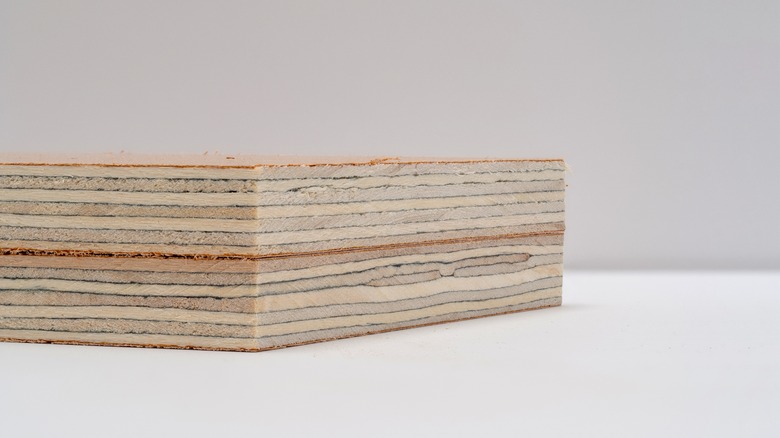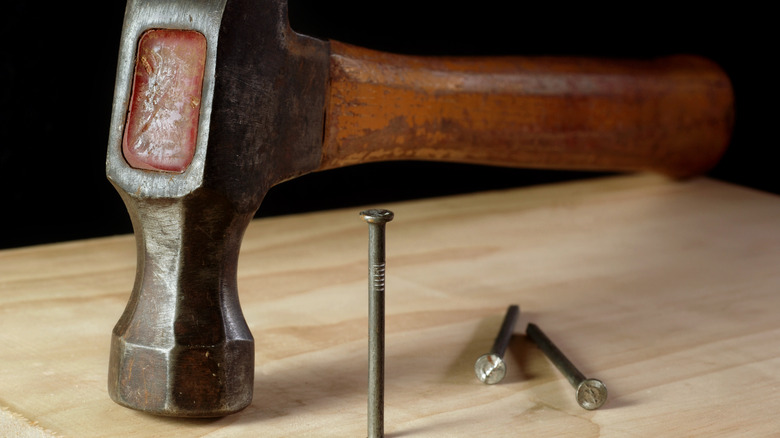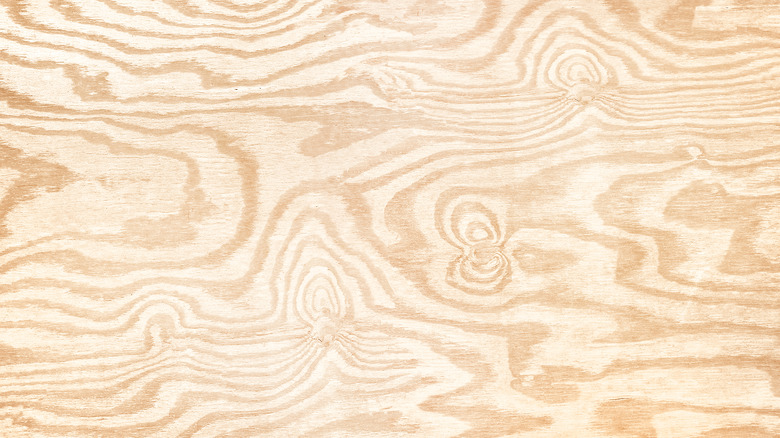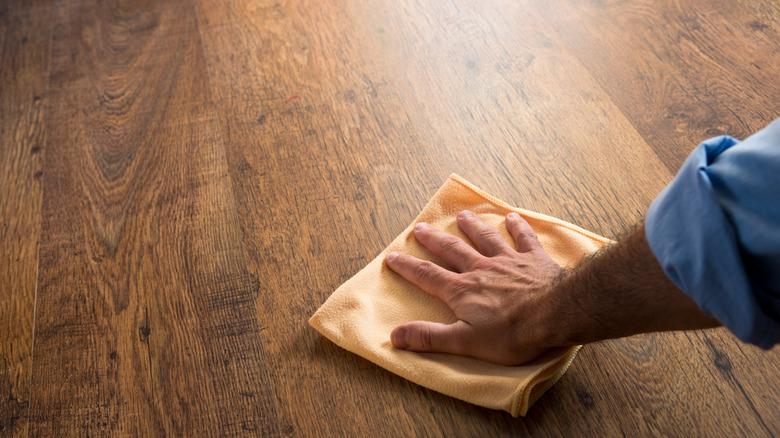Pros And Cons Of Marine-Grade Plywood
Back in the day, furniture was just, well, furniture. However, in recent times, it is an integral part of home décor, so a lot of consideration is made to ensure the blend of colors with other designs in the home. Aside from the style and color factor, the best material is selected to add that touch of durability. From the wide variety of wooden materials available in the market, marine-grade plywood has recently become a much-beloved trend. This leaves us wondering, what exactly is this material?
The marine-grade plywood is made from the layering of Douglas Fir or Western Larch wood to form one solid layer, via Innovative Building Materials. Originating from the Netherlands, this plywood material has become one of the most sought-after for different construction projects worldwide today, writes Curtis Lumber & Plywood. More so, it's a major material used in the construction of boat and furniture pieces, especially in high humidity regions, says Nimvo.
Although many argue against this material topping the list due to its disadvantages and would prefer fiber cement board, fiberboard, and ribbon grain plywood, marine-grade plywood still retains its stronghold in the industry. Now that you have discovered what constitutes marine-grade plywood, is it all a fad, or would it be a worthwhile investment? Remember our mantra: value for money. Let's weigh the pros against the cons and see if it'll suit your fancy, shall we?
Durability
We cannot overemphasize the durability level of marine-grade plywood. According to Boating Scout, the marine ply lasts for about 25 years when appropriately managed. This is very impressive and worth investing in at once. Have you thought about the feature that makes this plywood last for a quarter century? According to Woodshop Direct, the strength of this ply is from the layering of different high-quality wood materials, including Douglas Fir, Western Larch, and Garboon timber.
Then, the finishing technique is done by subjecting the layers to extreme heat, gluing, and pressure for a perfect bonding of each wood. Exposure to heat is very important during this process because it gives the ply extra protection from wear and tear, which attacks most wooden materials after a while. In addition, the glue materials for making the marine ply are synthetic plastic resin, one of the best adhesives that help keep water and moisture at bay, says CenturyPly. Automatically, the marine-grade plywood assumes the durability of each layer and resin. Now, you know why marine-grade plywood is very durable, and using it for your furniture keeps them functional for the longest time.
Beautiful surface
While durability is a major concern, the beauty and final finish of wooden material are also very important. For marine plywood, you need not worry about this because it comes with a smooth finish that makes it suitable for wooden floors without extra effort. If preferred, you can add a splash of color to your wooden top for additional beauty, says Confors.
Not to imitate Mac Flecknoe, but since "All human things are subject to decay," the aesthetic appeal of the marine-grade plywood wouldn't last long without proper maintenance. Luckily for you, the marine-grade plywood enthusiast, maintenance is as easy as ABC. One of the many ways to maintain marine-grade ply furniture is by cleaning off dust from its surface using a soft wet cotton cloth, via Tainuo Woods. This simple process keeps your marine-grade ply surface shining for a long time without spending extra money. Your marine ply piece can be wiped using common furniture cleaners bought from stores or naturally made in the home, writes Tarmeko.
Termite and water resistant
Contrary to public opinion, marine-grade plywood is relatively insulated from the many plagues that assail regular wood. Yes, including water, moisture, and termite damage. How cool is that? No matter how careful you might be, water spills still happen, if not of your own accord, then of a friend's or a niece. You cannot be too careful. Your obvious solution is switching to a more water-resistant material like steel, plastics, and of course, marine-grade plywood. The experts at Goldwood Industries also say that marine-grade plywood is great for areas like Portland, Oregon, and even New York, with high humidity.
Likewise, the marine-grade ply is designed to be termite resistant when used on highly infested and exterior surfaces. The resin adhesives placed between each layer also have excellent protection against termites, writes Duroply Industries Limited. If you have a continuous case of termites attacking and damaging the wooden materials in your home. We promised to review the cons because we cannot afford an imbalanced scale.
Harmful chemicals
One of the most important problems associated with marine ply is the presence of harmful chemicals that may damage human health, says FA Mitchell & Co Pty Ltd. The adhesives (formaldehyde and polyvinyl) used in gluing the thin layers together have been found to contain harmful substances that aren't good for human lungs and can lead to eye, ears, and nose irritation upon exposure. Also, a report in the Journal of the American College of Toxicology shows polyvinyl has been found to contain carcinogenic substances that cause liver damage in the human body. While it is easy to say these will fade off eventually, Healthy House on the Block maintains that these substances remain in the home as long as you continue using the marine ply.
Furthermore, the adhesives are highly flammable, which makes your home prone to extreme fire attacks when exposed. To be safe from these health damages, it is recommended to opt for better resin alternatives like soy-based glue and marine plies with no added formaldehyde resins, writes My Chemical-Free House Consulting experts, and to avoid using freshly-glued marine grade plies because the chemicals are very concentrated on them.
Price and hard to identify
For the DIY enthusiast or the budget hoarder, there is the temptation to purchase one's materials. However, you may encounter a hitch or two with the marine-grade plywood. Timber Blogger writes that it would be tricky for first-timers to recognize marine-grade plywood. This is because there are different grades of veneer used, and it will only take an expert to figure out the good from the bad. Eventually, you may buy the faux marine ply or succumb to getting swindled by the hired professional. However, this shouldn't be a problem when you work with the right experts.
Another con of marine plywood is its high price compared with regular plywood, writes HowMuchIsIt. According to Innovative Building Materials, a ¾-inch thick marine ply with the 4 x 8 measurement price ranges between $70 to $200. If you are working with a strict budget and trying to fix up a lot of materials in the home, you need to save a considerable amount to complete the project. However, you need to remember that they may be expensive, but you'll save a lot of money due to their durability.





